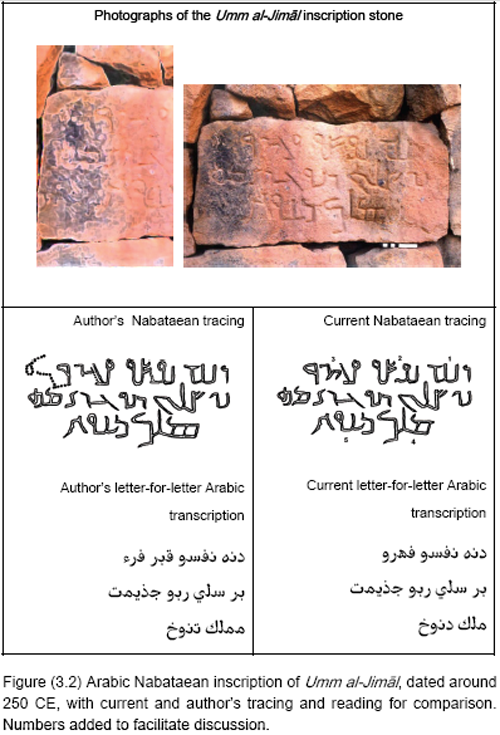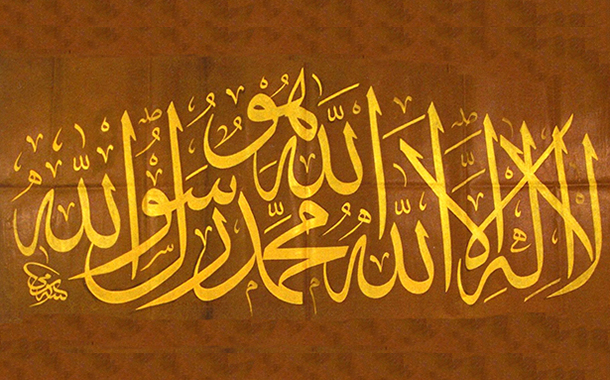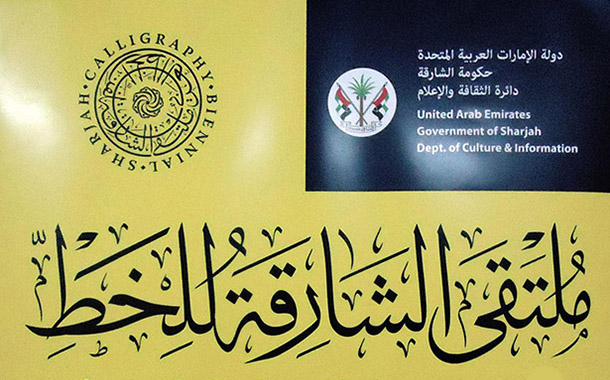 صدر مؤخراً عن دار بلوتوبف الامريكية، كتاب ممتع بعنوان “تعجيم بلاد العرب: متابعة نقدية للبحوث الغربية عن تأريخ العرب واللغة والكتابة العربية”، للباحث ومصمم الحروف الطباعية العراقي المهندس سعد الدين ابو الحَب. وقد تناول الكتاب دراسة أصول الحروف العربية بعد استقراء عميق وشامل لنقوش المسند والنقوش العربية والنبطية قبل الاسلام، اضافة الى دراسة مقارنة لمخطوطات القران الكريم الكوفية المبكرة.
صدر مؤخراً عن دار بلوتوبف الامريكية، كتاب ممتع بعنوان “تعجيم بلاد العرب: متابعة نقدية للبحوث الغربية عن تأريخ العرب واللغة والكتابة العربية”، للباحث ومصمم الحروف الطباعية العراقي المهندس سعد الدين ابو الحَب. وقد تناول الكتاب دراسة أصول الحروف العربية بعد استقراء عميق وشامل لنقوش المسند والنقوش العربية والنبطية قبل الاسلام، اضافة الى دراسة مقارنة لمخطوطات القران الكريم الكوفية المبكرة.
يعد هذا الكتاب مرجعاً شاملاً ومهماً عن تاريخ اللغة والكتابة العربية، اذ هو لا يكتفي بدراسة الموضوع سطحياً وروتينياً عبر عرض عام وسريع للمكتشافات والنظريات الحديثة، وإنما يعرض ويحلل بشكل موضوعي الدلائل المادية للمكتشفات الحديثة التي قدمها علماء الآثار الغربيٍّون في القرن التاسع عشر سوياً مع الدلائل الملموسة والقاطعة التي قدمها علماء الحضارة العربية الإسلامية. حيث يتفحص هذا الكتاب النظريات الغربية الحديثة عن تاريخ العرب واللغة والكتابة العربية عبر دراستها ضمن عوامل الثقافة الاستشراقية، ومكونتها الدينية والتاريخية الاستعمارية والتي ساهمت بشكل أساس في بلورة نظام الاعتقاد السائد اليوم إزاء التاريخ العربي واللغة العربية.
فدراسة هذا الموضوع المعقًّد والمترابط بشمولية هو الخطوةٌ الأساسية لدراسته موضوعياَ وعلمياً. ويعرض مؤلف هذا الكتاب علمياَ وبدون تحيز الحقائق التاريخية والجغرافية واللغوية المتعلقة بدراسة الموضوع عبر تقديمه وصفاً موجزاً لدور المبادئ الاسلامية والخصال القيادية للنبي محمد (صلى الله عليه وسلم) في توحيد الجزيرة العربية، وعبر دراسة القرآن كدليل واضح ومرجع هام لتاريخ اللغة والكتابة العربية.
يبحث ويحلل هذا الكتاب بشكل مفصل النقوش والمخطوطات الأساسية المتعلقة والتي قام الكاتب بدراستها المعمقة خلال أكثر من سنة ونصف من بحثه. وعلى وجه الخصوص، يقدم هذا الكتاب قراءات شاملة جديدة لنقشي أم الجمِال والنمارة النبطيين العربيين. اذ يتوصل الكاتب عبر دراسة تحليلية شاملة إلى أن حجرالنمارة، الذي اكتشفه عالِم الآثار الفرنسي “دوسود” عام (1901) وهو معروض حالياً على حائط في متحف اللوفر في باريس، ليس شاهدة قبر “امرؤ القيس بن عمرو” كما ذهب المستشرقون لأكثر من قرن، وانما هو نصب تذكاري لشخص محارب اسمه “عكدي”، وهو شخصية عربية تأريخية غير معروفة مسبقاً وربما كان جندياً عربياً في الجيش الروماني، أو قائداً قبلياً حارب مع الروم في اليمن. كما يثبت الكاتب عبر الادلة الملموسة والقاطعة بأن نقش حجر أم الجِمال النبطي ليس شاهدة قبر لشخص اسمه “فيهرو بن سالي” كما ادعى المستشرقون، وإنما شاهدة قبر فرأ بن سالي. وقد اعتمد الكاتب في بحثه مراجع علم النحو والصرف العربي، قديمها وحديثها، وناقش دقتهما في بعض الأحيان. اذ ربما تعدِّل وتصحح نتائج البحث في هذا الكتاب عدد من الحقائق اللغوية والتاريخية المتناقلة اليوم في كتب التاريخ العربي.
A comprehensive reference on the history of Arabic Language and script, which goes beyond the casual discussion and overview of modern discoveries. It studies objectively the evidence presented by the 19th century Western archeologists together with the evidence presented by the indispensible scholarly work and research of the older Islamic Arab civilization. The book scrutinizes modern Western theories about the history of the Arabs and Arabic language and script in connection with the roles played by orientalist scholarship, religion and colonial history in the formation of the current belief system vs. Arab history and language, which is an essential step to study this correlated and complex topic objectively. In his book, the author explores the relevant facts of history and geography as crucial defining factors in the study of history of Arabic language and script. He offers a brief balanced account on the important topic of Muhammad leadership and Islam in the formation of Arabia, and investigates the Quran as a key evidence and reference of the Arabic language and script.
As a research tool, the book presents in-depth tracings and readings of the relevant inscriptions and the findings accumulated by the author over one and a half year of research. Particularly, it presents new comprehensive readings of the important Umm al-Jimāl and al-Namārah Nabataean Arabic inscriptions. The al-Namārah stone which was discovered by French archeologist Dussaud in 1901 (displayed today on a wall in the Louvre Museum of Paris) was assumed for more than a century to be the tombstone of the prominent pre-Islamic Arab king, Umru’ al-Qays bin `Amru. After re-tracing and re-reading its complex inscription, the author concluded it was actually about a previously unknown personality named `Akdi, possibly a high ranking Arab soldier in the Roman army or an Arab tribal leader, not the burial stone of King Umru’ al-Qays or even about him. Similarly, the author proves beyond doubt that the important Umm al-Jimāl Nabataean Arabic inscription was not the burial stone of Fihrū bin Sālī, but Faru’ bin Sālī. The two inscriptions are among only four Nabataean inscriptions believed by Western scholars to be written in the old Arabic language. These are referenced heavily today as the main evidence linking the Arabic script to the Nabataean Aramaic script. Utilizing classic Arabic and grammar tools and challenging their accuracy at times, the findings of this book could potentially amend several historical and linguistic facts as told today by history textbooks.
In his study, the author, a known Arabic type designer, examines with an investigative eye the early shapes of the pre-Islamic Arabic script and compares them to those of Musnad Arabic and late Nabataean Aramaic inscriptions, in addition to those of the early Islamic Arabic manuscripts and papyri. He concludes that the early Arabic script was not an evolved Nabataean script, but likely an independently derived script of the old Musnad Arabic script, with clear Nabataean influence.
Although this book is conceived as a reference tool for scholars and researchers, other readers may find its topics and captivating arguments valid enough to debate and to study further. All chapters can be read independently. There are more than 40 figures and illustrations to aid the reader throughout the book. The first two chapters are intended as introductory essays regarding the history of Arabia (people and language) and the role of Western scholarship. To facilitate the selective and independent reading of the last three chapters, which presents the author research findings and conclusions, the book included (in addition to the chapter-specific references already offered throughout the whole book) chapter-specific introductions and conclusions.
Visit Google Books for a brief look inside the book:
And Amazon Books

















